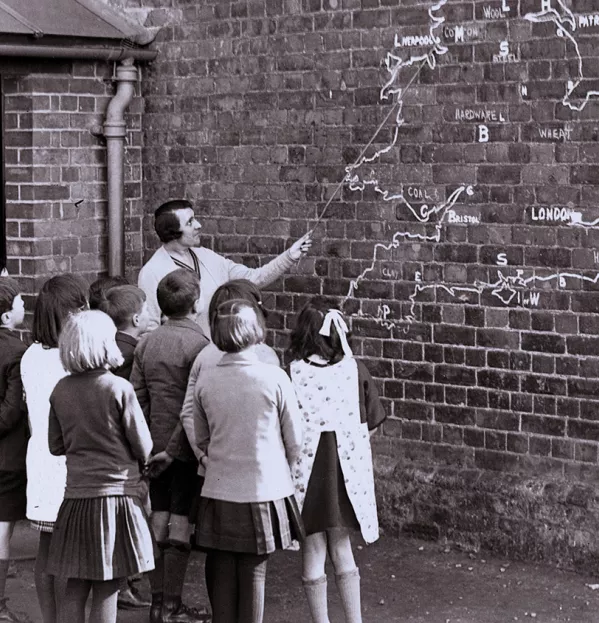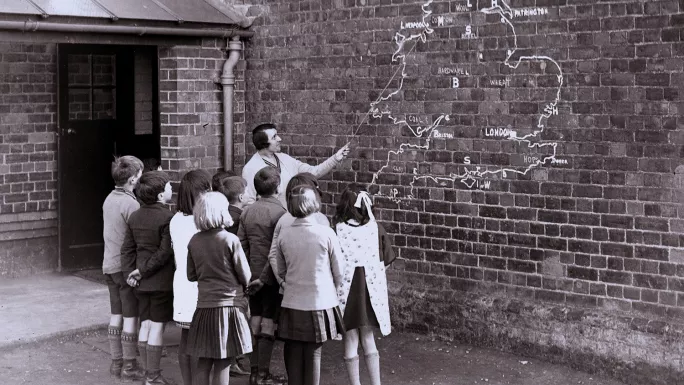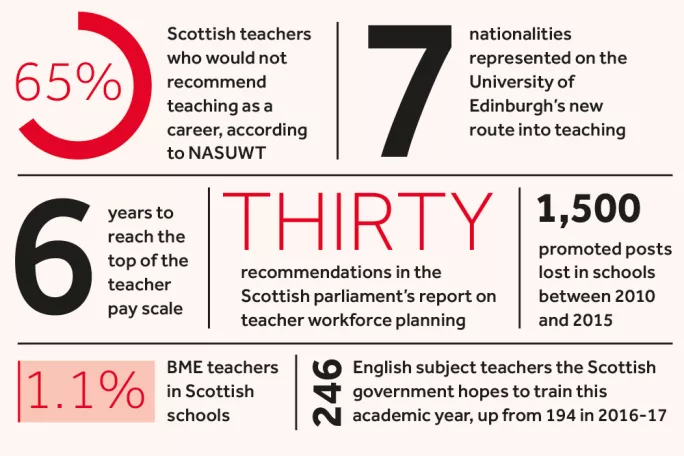Redrawing the map for teacher training routes

Teaching is more important than making rockets or bridges. It’s about making people.
That is the thrust of the latest Scottish government teacher recruitment campaign aimed at tempting scientists, mathematicians and engineers into the profession. Last month, the campaign was expanded to target university undergraduates studying English and home economics subjects, including food, nutrition and health courses.
The move to cast the net more widely in the search for secondary staff came from the Scottish government after it was revealed that the nation’s classrooms were short of around 700 teachers as the new school year got underway.
Now experts, from classroom teachers and a former director of education, to the chief executive of the General Teaching Council for Scotland, and the dean of the University of Edinburgh’s school of education, have shared their views on how Scotland should tackle the teacher shortage.
The importance of “talking up teaching” - which the government is doing via its recruitment campaign - was highlighted but so was the need for better pay, more career-progression routes, sabbaticals for teachers, bursaries for teacher-education courses, and the need to get minority ethnic groups better represented in Scottish classrooms.

Black and minority ethnic groups make up around 4 per cent of the population but only 1.1 per cent of the overall teaching workforce, according to Jatin Haria, director of the Coalition for Racial Equality and Rights.
Some of the experts’ comments chime with the 30-plus recommendations to help address the teacher shortages across the country that were made by the Scottish Parliament’s Education and Skills Committee at the beginning of the month.
GTCS chief executive Ken Muir laments that Scottish teachers reach the top of the pay scale after six years then find their options for progression are limited. The move in recent years to bring together a number of different subjects areas under one faculty head had brought some benefits.
However, a downside of the move away from discrete subject departments is the dearth of promoted posts now found in schools. Figures compiled by teaching unions show that between 2010 and 2015, over 1,500 promoted posts were lost in schools, a drop of around 12 per cent.
Muir, who spoke at a recent Holyrood conference on teacher recruitment and retention, hopes the recent Education Governance Review, which acknowledged the “lack of promoted posts in Scottish teaching, particularly in the primary sector”, will address the issue.
Millennial approaches
Muir is also calling for more routes into the profession. The GTCS - which accredits all teacher-education courses - has already signed-off on 11 new routes into teaching. But he wants to see more ways into teaching for career changers, as well as more ways back into the classroom for those who have drifted away from the profession.
Millennials - people born in the 1980s and 1990s - are not looking for a job for life, Muir believes. We need to adapt and think differently. He says: “We have to look at new routes; traditional routes are not cutting the mustard. Do we actually have the mechanisms and infrastructure to allow for the fact that people might want to change careers and come into teaching later? Or return to teaching? What is the infrastructure to allow that kind of thing to happen?”
Schemes targeting career changers do exist - for example, the University of Edinburgh runs a course for returners - but Muir suggests that more work is needed.

Figures obtained by Tes Scotland show that the two largest schemes aimed at career changers - run by the universities of Dundee and Aberdeen - should deliver 60 primary teachers across eight local authorities next year; this academic year, Scotland aims to train 1,900 primary teachers in total.
The Aberdeen scheme - called Distance Learning Initial Teacher Education (DLITE) - is also extending into secondary for the first time. Eleven participants have signed up for the two year course that starts this month.
However, the Scottish government’s ambition was that this programme would run in councils across the country. While the programme was open to all councils, only three have signed up: Aberdeen City, Aberdeenshire and Angus.
Another new route getting underway this month is a two-year master’s at the University of Edinburgh - the MSc in Transformative Learning and Teaching. Its graduates will walk away with a teaching qualification and a full master’s degree.
The government assigned 50 places to the course, which started this week, but it will have around half that number, the head of the university’s school of education, Rowena Arshad estimates, because recruitment did not get underway until February.
However, the early signs are that the route is managing to attract a different kind of student. Scottish teachers tend to be white, monolingual and female - as in the rest of the western world, says Arshad. But among the 27 potential recruits to this programme, seven nationalities are represented and eight or nine languages spoken. The average age of the students is 30, the oldest is 57 and there is a school librarian, a manager from the early years and a wellbeing coach among their number.
Arshad says: “Diversity was the aspiration but to see that come alive - I was gobsmacked. I’m interested to find out exactly why the demographic for this course is so diverse, because I’ve been trying to do that since I started out in my career as a rookie lecturer and since I became head of the school of education in 2013.”
Arshad calls for more common sense when it comes to who gets on to teacher education courses. She recalled an occasion where an applicant for a place on a secondary postgraduate science, technology, engineering and maths course was turned down by her university because he did not have Higher English, despite being published in English in international peer-reviewed journals.
Show them the money
Arshad saw to it that the university’s decision was overturned after establishing with the GTCS that it was sufficient for a teacher to have Higher English at the point of exit from a teacher education course, as opposed to the point of entry - unless the subject they wanted to teach was English.
“When it comes to Stem, there are quite a lot of people out there with Higher maths, but not necessarily with Higher English,” Arshad explains.
With the new master’s course, a conscious effort was made to move away from “traditional credentials”. For instance, applicants did not have to have experience working in a primary in order to be considered.
However, Keir Bloomer, the convener of the Royal Society of Edinburgh’s education committee and a former education director, warns that if Scotland genuinely wants to improve the flow of teachers into the profession, teachers need to be paid better.
Bloomer says: “If you are in a market and supply is inadequate then you are paying too little. The answer to that is to pay more.”
But more than poor pay is contributing to the “general malaise of the system”, he says. Workload is also an issue, as is the government’s “frenetic hyperactivity” when it comes to education.
Geography teacher Richard Bell, who is also on the NASUWT teaching union’s national executive for Scotland, says the enthusiasm and morale of teachers are important when it comes to influencing the future career choices of pupils. But a recent NASUWT survey of 400 Scottish teachers found 65 per cent would not recommend teaching as a career.
He warns that if pay and conditions are not improved soon Scotland’s recruitment crisis will develop into a retention crisis.
Register with Tes and you can read two free articles every month plus you'll have access to our range of award-winning newsletters.
Keep reading with our special offer!
You’ve reached your limit of free articles this month.
- Unlimited access to all Tes magazine content
- Save your favourite articles and gift them to your colleagues
- Exclusive subscriber-only stories
- Over 200,000 archived articles
- Unlimited access to all Tes magazine content
- Save your favourite articles and gift them to your colleagues
- Exclusive subscriber-only stories
- Over 200,000 archived articles